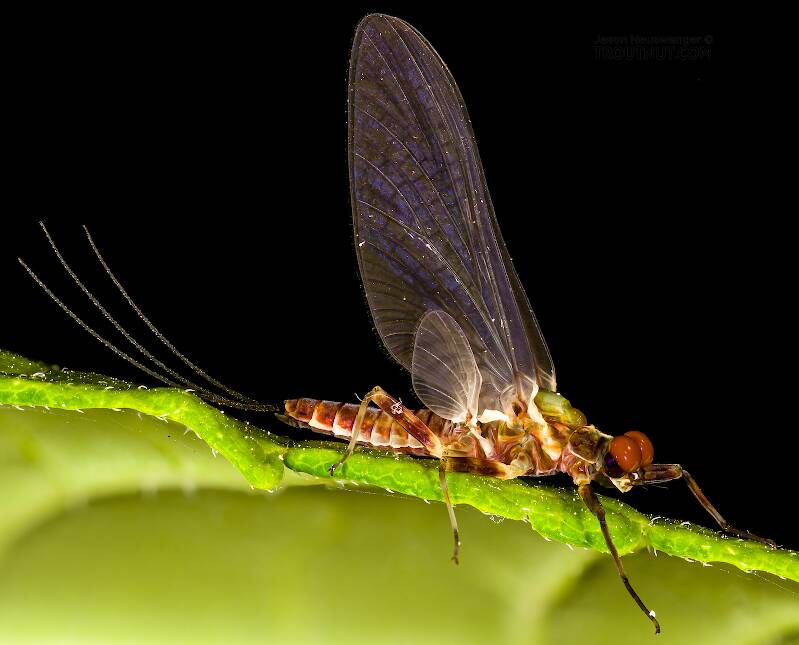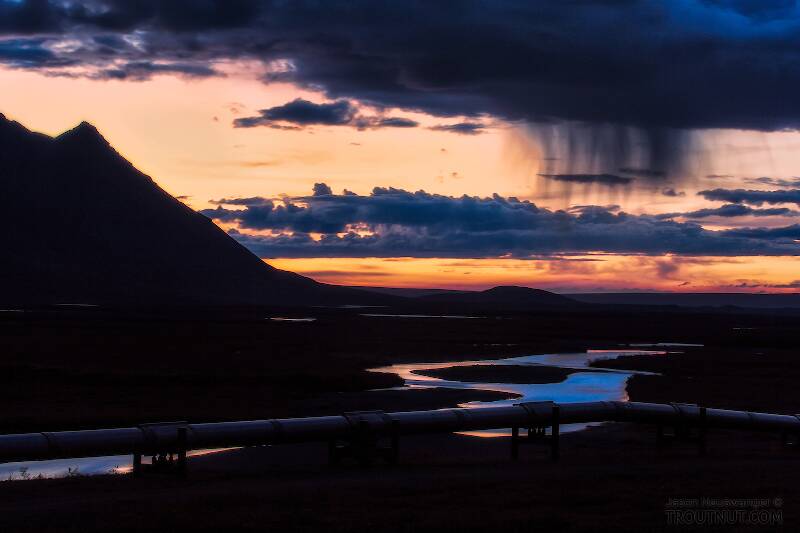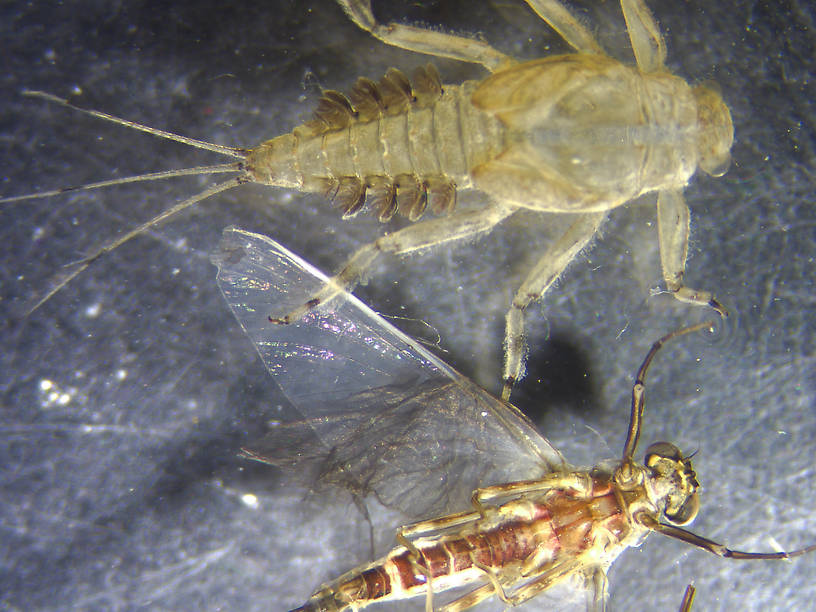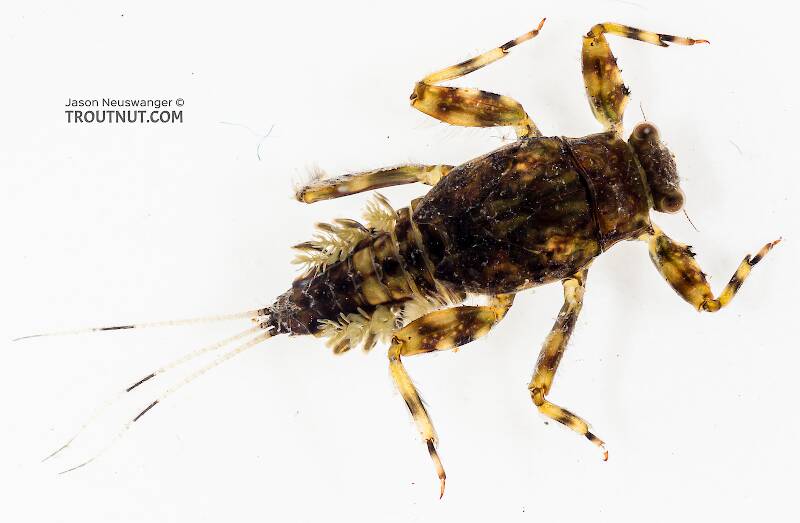
Blue-winged Olives
Baetis
Tiny Baetis mayflies are perhaps the most commonly encountered and imitated by anglers on all American trout streams due to their great abundance, widespread distribution, and trout-friendly emergence habits.
Featured on the forum

I caught this tiny larva without a case, but it seems to key pretty clearly to to Glossosomatidae. From there, the lack of sclerites on the mesonotum points to either Glossosoma or Anagapetus. Although it's difficult to see in a 2D image from the microscope, it's pretty clear in the live 3D view that the pronotum is only excised about 1/3 of its length to accommodate the forecoxa, not 2/3, which points to Glossosoma at Couplet 5 of the Key to Genera of Glossosomatidae Larvae.

Troutnut is a project started in 2003 by salmonid ecologist Jason "Troutnut" Neuswanger to help anglers and
fly tyers unabashedly embrace the entomological side of the sport. Learn more about Troutnut or
support the project for an enhanced experience here.
Western Slate Olives
This common name refers to only one species. Click its scientific name to learn more.
Mayfly Species Drunella flavilinea
These are very rarely called Western Slate Olives.
The Flavs pick up about a week after the closely related but larger Western Green Drakes (Drunella grandis and Drunella doddsii) finish hatching on most Western waters.
Their hatches may be complemented by simultaneous hatches of two less prolific species, Drunella coloradensis and Drunella spinifera.
Their hatches may be complemented by simultaneous hatches of two less prolific species, Drunella coloradensis and Drunella spinifera.

This dun is smaller than would normally be expected for Drunella flavilinea, but it seems to fit the physical description of that species fairly well. I wasn't sure from the dun pictures alone, so I was hoping it would molt into a spinner. It never made it out of the dun's shuck, but it did begin the process, which allowed me with great care to tease out the last couple abdominal segments of the spinner from the still tightly attached dun shuck, enabling a more confident ID based on the shape of the spinner's penes and sub-genital plate. I also collected a nymph of flavilinea in the same river on the same evening, as well as a shed exuvium that looked large enough to belong to an emerging dun.
The other possibility I considered for a while based on the dun was Drunella pelosa, which would be the right size, but the other characteristics don't fit.
The other possibility I considered for a while based on the dun was Drunella pelosa, which would be the right size, but the other characteristics don't fit.
See 2 more specimens...



